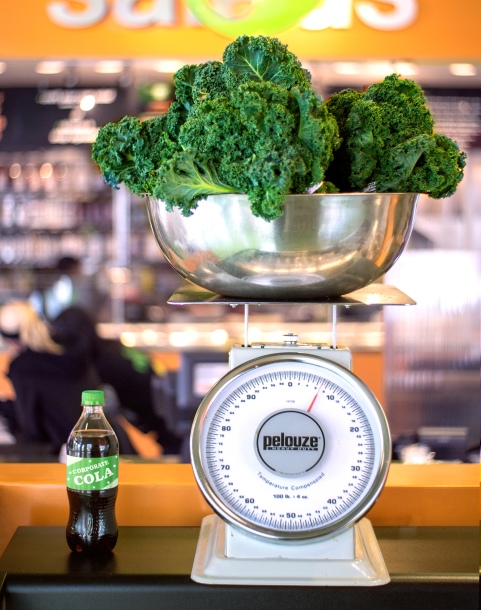The USDA estimates that the average American consumes 22 teaspoons (or around 355 calories a day) from added sugars. Although there is no official recommended daily limit for sugar or calories from sugar, the World Health Organization has recommended limiting sugar to less than 10% of total calories (180 calories or around 11 tsp of sugar on an 1,800 calorie diet). For reference, one 20oz soda has 16.25 teaspoons of sugar.
Carbohydrates are your body’s main source of energy. Simple carbohydrates are known as monosaccharides (glucose, fructose, and galactose) and disaccharides (maltose, sucrose, and lactose). Complex carbohydrates–the ones that dietitians tell you to eat more of–are called polysaccharides and come in the form of starch and fiber from plants.
Whether simple or complex, carbs all eventually metabolize into glucose which is the fuel for every cell in the body. However, the source of carbohydrate is important, as one may be more health supportive than the other. Let’s compare an orange vs. white table sugar (sucrose). Both give you about the same amount of glucose and fructose, but with the orange, the sugars arrive in the body accompanied by vitamins, minerals, fiber, and phytonutrients, making the orange a better choice.
Food manufacturers disguise sugar with a variety of aliases including: turbinado sugar, honey, raw sugar, brown sugar, corn syrup, molasses, fructose, maltose, sucrose, xylitol, mannitol, concentrated fruit juice, dextrose, cane juice, corn sweetener, malt syrup and invert sugar, so it’s hard to really gauge how much added sugar you’re consuming in a day. Also, the sugar posted in grams on a food’s Nutrition Label accounts for both naturally occurring and added sugars which can also add to the confusion. For instance, yogurt already has naturally occurring sugar (lactose), but some varieties of yogurt can have high amounts of added sugars that would be best to avoid.
And since it’s already a confusing process to figure out what you’re eating most days, the fact that food labels haven’t changed in 20 years, but our serving sizes have obviously increased, means that we’re often consuming more empty calories from sugar than we even thought. For instance, many 20 ounce bottles of sodas or sweetened beverages list multiple servings per bottle. If you think you’re only consuming 90 calories from sugar, make sure to multiply the calories by the number of servings for total calories.
Sodas, sports drinks and energy drinks are the top source of added sugar in American diets, and despite all the calories, are essentially devoid of nutrition. So when it comes to sugar (as with many things in life), consider the source. Worry less about naturally occurring sugars found in fruit, vegetables, dairy and whole grains that are accompanied by essential nutrients. Also worthy of noting are the newest proposed food label changes that would help clear up much of consumers’ confusion about naturally occurring and added sugar. The new and improved label would clear up serving size confusion as well and show nutrition (and sugar) for the full package or bottle which is much less misleading for consumers.

